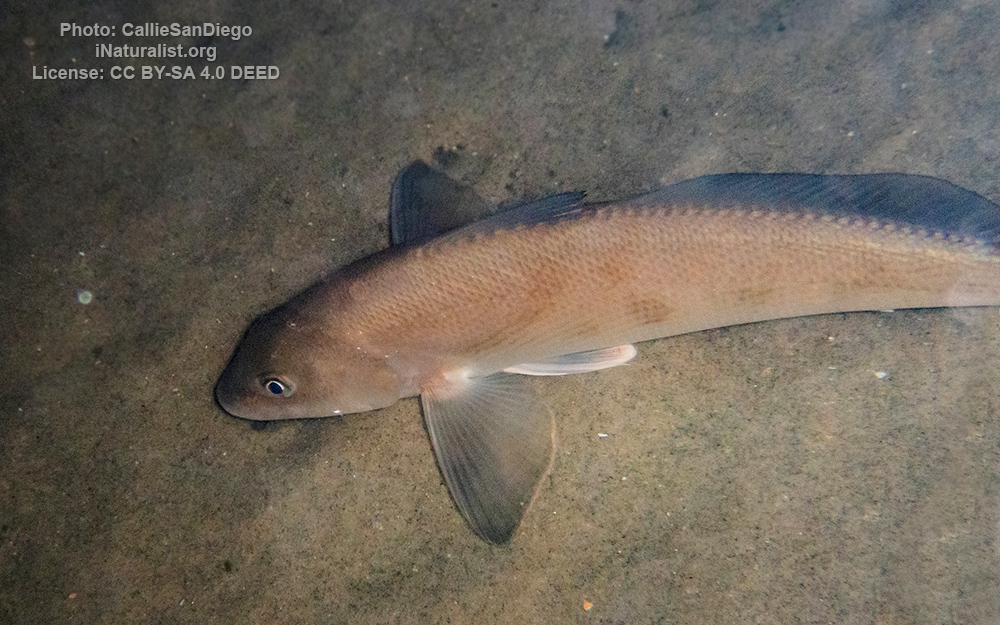California kingcroaker
(Menticirrhus undulatus)

Classification
General data
The California corbina (Menticirrhus undulatus) is marine demersal fish in the croaker family. It can often be found along sandy beaches and in shallow bays. This species travels in small groups along the surf zone in a few inches of water to depths of 20 meters (66 ft). Other names include California kingcroaker, California whiting, and kingfish.
Description
California corbina are uniformly grey in color with some iridescence and have an elongated and slightly compressed body shape in comparison to other croakers. Like all members of the genus Menticirrhus, the California corbina lacks a swim bladder but is able to produce a croaking sound. It is believed that the loss of the swim bladder evolved to facilitate living in a turbulent environment. This species and the yellowfin croaker are the only two of the eight coastal croakers found in California waters to exhibit a single barbel on the lower jaw. The California corbinas barbel is short and stiff and is used to detect prey. The upper half of the caudal fin has a concave trailing edge, while the lower half trailing edge is convex.
The largest recorded specimen was 28 inches (710 mm) and 8.5 pounds.
Distribution and habitat
California corbina is reported to occur from the Gulf of California, Mexico, to Point Conception, California. However, the IUCN questions the extent of the California corbinas southern range due to the presence of similar and easily misidentified species that exist in the Gulf of California.
California corbina are commonly found in the shallow troughs and ditches running parallel sandy beaches and shallow bays up to a depth of 20 meters (66 ft). California corbina are often found in small groups, however, adults have been observed traveling solitarily as well. The California Corbina works the shallows of sandy beaches searching for food in the shallows and seeking cover below the rough white water created by waves.











